Thanksgiving weekend I traveled south to El Rosario with my friend Antonio Muñoz, the owner of that town’s ‘Baja Cactus Motel’ and Pemex Gas Station.
Baja Cactus Pemex in El Rosario
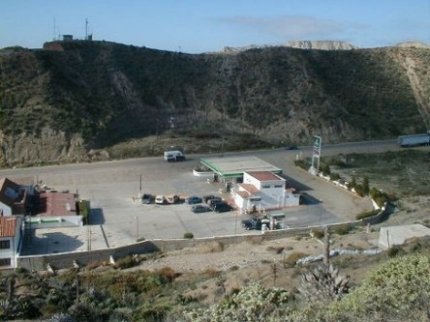
The next gas may be 200 miles away, so it is wise to top your tank here. Credit cards accepted! Next door is Baja Cactus Motel, both operated by Antonio Muñoz.
Baja Cactus Motel: 30°03.58′, -115°47.35′ (WGS84)
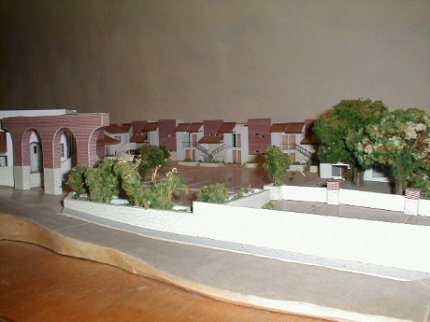
In the motel office is a model showing the future of Baja Cactus.

A quicky-mart, good fast food, laudromat, showers, first aid clinic, and tourist information center will be built next to the motel.

El Camino Real marker at the entrance to Mission Rosario de Arriba historic park.
Mission ROSARIO de Viñadaco (Arriba) 1774

One end of a mission building was recently coated to preserve it. In 1802, the mission was moved down the valley (Rosario de Abajo) when the spring here dried up. To see and read more about California’s first Dominican mission: http://vivabaja.com/missions2
30°04.00′, -115°43.13′

Looking south at the melted walls of the original mission church.
Playa La Bocana: 30°2.61′, -115°47.35′
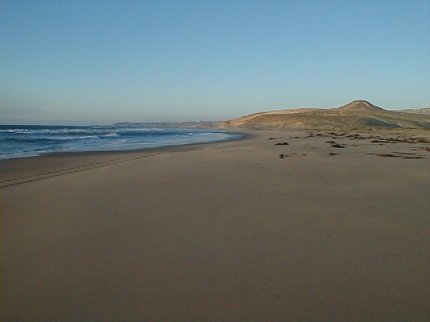
No facilities, just sand! Near that distant hill is the future location of a water desalinization plant for the Diamante Del Mar development.
Antonio Muñoz, ‘BajaCactus’ on the Internet

At beautiful La Bocana beach, just four miles down the valley from El Rosario.
Hugo Lopez
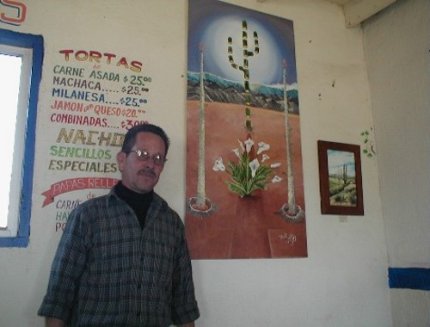
El Rosario’s very talented artist runs the Tacos Misión café on the east side of town.
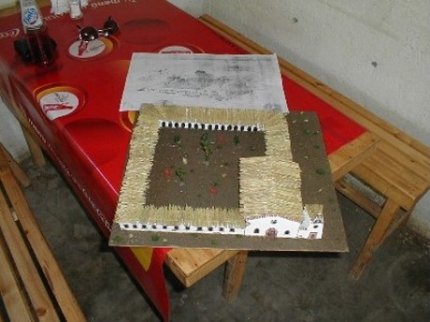
Hugo is making a model of the mission from a sketch (behind the model).

Hugo’s painting of the Old Mill at San Quintin hangs in Room 201 at Baja Cactus.

Hugo’s Baja desert scene with boojums (cirios) hangs in the motel lobby.
Thanksgiving Dinner 2004
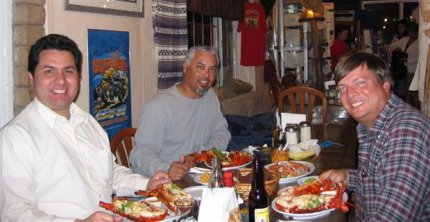
Antonio (BajaCactus), Tony Miranda (Diamante Del Mar project), and I (David K) at Mama Espinoza’s Restaurant.
I am enjoying ‘Baja Turkey’

Which is usually called LOBSTER!
Friday’s Excursion

We pass El Castillo (The Castle), a landmark cliff as we go up the Rosario river valley from Highway 1. The turnoff is on the south side of the bridge, 5.1 mi. from El Rosario: 30°05.70′, -115°39.55′
I find a small boojum tree that consents to having a picture taken with me… they are usually too shy!
CIRIO (Boojum)

Boojums are some of the most interesting trees (cactus) on earth!

Spanish moss hangs from some boojums along the road, east of Cuesta la Vibora: 30°08.99′, -115°31.57′

Most boojums just grow straight up, like an upside down carrot. They can get very tall, one reached 90 feet before falling. They are some of the world’s oldest plants, as well.
BIZNAGA (Barrel Cactus)

Purple spines add color!
MESCAL (Agave, Century Plant)

A happy agave along the Cuesta la Vibora road.
CARDÓN

Baja’s cardón is the world’s largest species of cactus. The sun is eclipsed by this giant.

Seldom does one see a boojum with so many branches!
EL CAMINO REAL
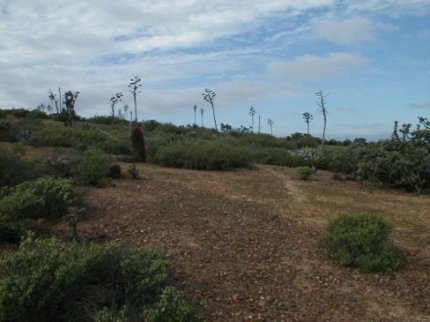
The inter-mission ‘King’s Highway’ is little more than a cattle path in Northern Baja, where it can still be seen.

Because it was in the documented area, and it was very deeply worn, I was confident this was the original Baja highway used by the Indians, padres and prospectors.
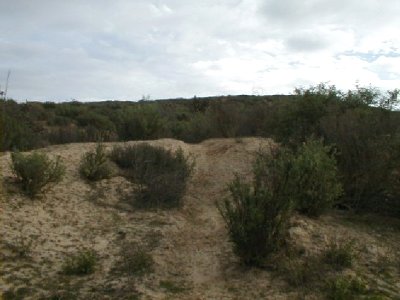

In this southeast facing photo, Mesa la Sepultura is seen. The Camino passes to the north of the mesa going to San Fernando Velicatá. To find this piece of El Camino Real, take Mexico Highway 1 to Km. 80+ (almost K-81) about 14 miles from El Rosario. There is a sharp curve to the left and here a wide dirt road turns off to the right (south). This is the road to Punta San Carlos (36 mi.). Go just 0.5 mi. and turn right on the dirt road going west. Go 1.4 miles on this road and park. You are on top of the ECR route. The Camino Real hike begins at 30°1.17′, -115°33.31′ (map datum WGS84) elev. 973′. The old trail goes straight towards El Rosario (northwest). I hiked about a mile of it in November, 2004. For more on El Camino Real and maps of it’s route, see http://vivabaja.com/ECR
PITAYAS!!! (Baja’s famous cactus fruit)

The Pitaya dulce (Organ Pipe Cactus) produces a fantastic juicy treat. Roadside vendors were selling them in San Quintin. Se vende Pitaya Vuena (Buena) Spanish for Good.

On the right is the fruit with spines, on the left they were trimmed and ready to eat. The fruit was brought up from La Paz.
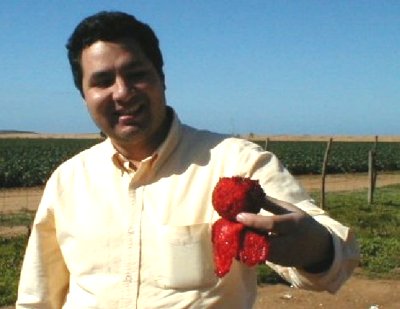
Antonio shows me how to peel the fruit… it’s easy!
YUMMY!

Very juicy, 100% edible, tiny strawberry-like seeds, like biting into a cherry popsicle! Thank you Antonio http://www.bajacactus.com/ Adios amigos! David http://vivabaja.com/ Baja Discussion Forums: vivabaja.com/davidsmessage